Here, with a little hindsight, we’ve disseminated the announcements from some of the biggest names in 3D printing, dug out the bits that are actually useful, and graded the stories according to their ‘earth-shattering-game-changing-ness’.
Grading explained:
A = Shut up and take my money
B = New, interesting and definitely worth keeping an eye on in 2019
C = New announcements, but nothing worth fighting a bear over just yet
D = As you were, things are chugging along as normal over here
E = Nothing to see here

Company
BigRep
What’s the news?
The German company launched its most advanced FDM 3D Printer for industrial printing yet – the dual MXT extruder BigRep Edge – with dynamic response for start, stop and corners, as well as high material throughput.
The reality?
A Bosch Rexroth motion control system and new extruder technology means that this is seriously fast FDM printing (>600mm per second) across a huge heated build area (1500 x 800 x 600mm) all done with precision.
Grade:
B+ – BigRep has made the rapid leap from being a novelty-oversized-RepRap to industrial equipment manufacturer in record time. The MXT extruder tech alone is worth having a look at, but add in Bosch’s control system and the build area and it could be on to a winner
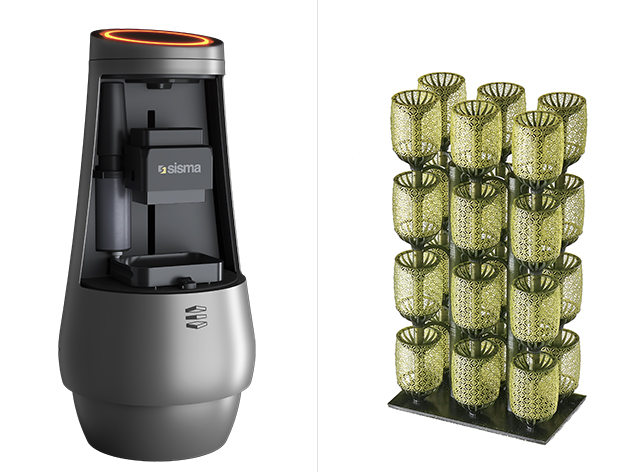
Company
Sisma
What’s the news?
The launch of its Everes desktop DLP 3D printer with smart functionality for fast, high detail printing. Its Zero Tilting Technology means the resin vat is fixed in the machine while the glass tilts after each layer has been printed, limiting mechanical stress layer after layer on the object being formed and reducing the ‘suction’ effect that slows competitor technologies.
The reality?
A lot of consideration has gone into the functional design side of the Evers platform. A number of resin types were showcased for product prototyping and jewellery (castable) being the most interesting – with the latter producing some exceptionally fine detail. Not bad at all for a company more typically associated with SLS Metals 3D Printing.
Grade:
B+ – Neat, well thought through and for anyone using 3D printing for casting metal parts especially, this could be a solid alternative to what is already on the market

Company
Somos
What’s the news?
A range of new materials for additive manufacturing, not forgetting the prototyping stages.
The reality?
We were immediately drawn to the new PerForm Reflect material (above) specifically designed for use in PIV wind tunnel testing for aero design optimisation – with a 30 per cent reduction in post processing, a silky smooth high detail finish, and all in hi-viz orange.
Grade:
B+ – A performance material for a very specific purpose that’ll benefit a whole swathe of designers – proof that it’s the little things that make the big differences

Company
GE Additive
What’s the news?
The old Concept Laser M-Line production system concept has been rejigged by GE and made a reality, but unless you’re in the market for production manufacturing kit, you’ll likely be more interested by GE’s AddWorks design-for-additive consultancy service – demonstrated at Formnext by projects with Callaway Golf (above) and HRE Wheels.
The reality?
Its bid to grow the market for GE 3D printing systems outside of its own ecosystem (GE is still its own best customer) means that the AddWorks team is got some deserved promotion at Formnext. It’s really worth a look if metals additive is something you’re toying with, given their skills and abilities of taking a concept through to a production item.
Grade:
B – One foot in the future and another in the present day, GE Additive’s metals 3D printing is starting to whirr through the gears now

Company
Hirtenberger
What’s the news?
The Austrian materials surfacing company launched its Hirtisation, which claims to remove metals 3D printed support structures and finish the parts to a high polished finish with no mechanical processing, only a three-step electro-chemical process, all done within one machine.
The reality?
On paper it sounds like witchcraft, and the demo parts we saw certainly looked impressive – with examples from Siemens catching the eye. Each process is material specific, taking anything between 30 minutes or five hours, and comes as a result of Hirtenberger’s history of preparing metals surfaces for finishing and coatings.
Grade:
B – It’s a technology unlike anything we’ve ever seen before and although there was no visible pricing, the process is offered as a service for those interested in what it can do
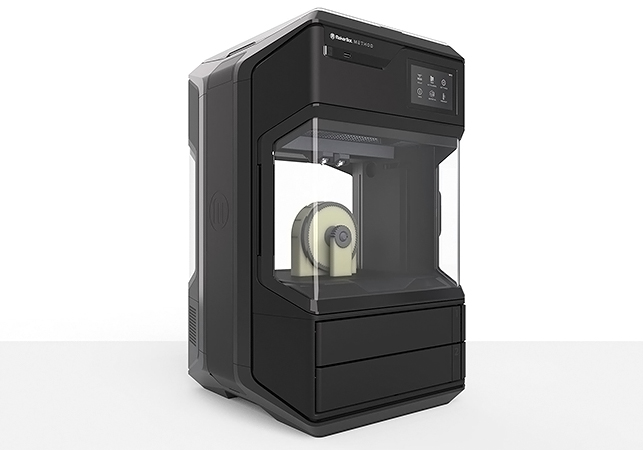
Company
MakerBot
What’s the news?
Back from its hiatus, MakerBot has launched Method – ‘The First Performance 3D Printer’ – that it claims breaks price and performance barriers holding back professional users.
The reality?
MakerBot has finally been given the key to parent company Stratasys’ patent library, and as a result it looks to have produced a solid, intuitive and seemingly very capable desktop 3D printer. Its price plonks it into the midst of several very capable competitors, so we’re eager to see what it is capable of producing when it ships at the start of 2019.
Grade:
B – We’re all still waiting on a desktop 3D printer that produces what you want with the ‘hit print’ ease of a 2D printer – and while this isn’t new tech or materials, it might just bring that ease of use that lets professionals crack on with the more important stuff

Company
Stratasys
What’s the news?
The big player finally got around to giving its metals 3D printing technology a formal launch: Layered Powder Metallurgy (LPM) technology, it will use standard Powder Metallurgy (PM) alloys, with its first incarnation as a machine set to tackle 3D printing in aluminium
The reality?
You’re unlikely to see any of the metals technology out in the wild until after the next Olympics, so we’ll skip past that for now. In the meantime, and somewhat overshadowed, was some top level materials development: a new TPU 92A Elastomer material adds some serious value to Stratasys’ popular ‘desktop’ F123 series with durable elastomeric parts; while developments for its J750 and J735 multimaterial PolyJet 3D Printers include five new materials with an ability to mimic rubber, leather or plastic.
Grade:
B – Future-facing news aside, the materials developments should open up some doors for existing customers on both the functional and aesthetic sides of prototyping.

Company
XJet
What’s the news?
A new ceramic material, water soluble supports and big ramp up in production and market presence sees the company move out of start-up status.
The reality?
XJet has enough experienced industry heads to know what it is doing, and its nano-particle jetting technology is one that everyone is taking notice of. Its new Alumina ceramic material will open up its technology to a wider range of markets, and the soluble support material offers more design freedom – especially for metals materials that will arrive in 2019
Grade:
B – 2019 looks set to be a big year for this technology which already has a base in the UK, so keep a look out for news of its metals products in the coming months.

Company
ExOne
What’s the news?
The X1 25PRO metals binder jetting 3D printer made its first European appearance, using the company’s patent pending MIM powder processing machine technologies
The reality?
A decent looking piece of kit that’s a scaled-up version of its Innovent+ system launched earlier this year for labs and universities at a research level, while another new machine has been teased for a launch in early 2019. Meanwhile we took an interested look at its work with Sandhelden, which utilises ExOne sand casting tech to produce end use parts for furniture and homewares.
Grade:
C+ – The metals binder jetting market is getting increasingly crowded, although ExOne’s offering is really worth a look as a mid-sized option
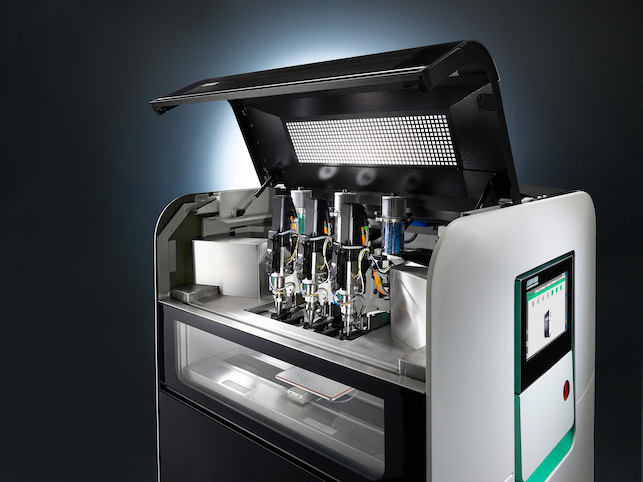
Company
Arburg
What’s the news?
The launch of the Freeformer 3-300x, its biggest 3D printer to date it is capable of printing in three materials (two build and one support) from ‘qualified original materials’ or standard injection moulding plastics
The reality?
The two previous versions of the Freeformer, despite the interest in stock materials, didn’t exactly set the world on fire. Having realised this, Arburg has upgraded the machine to allow for factors such as overmoulding, and introduced a rental package for the 200-3x version of the printer for new customers, promoting its strengths as a ‘proving tool’ for injection moulding or short run production.
Grade:
C – A very solid machine, but it seems destined to sit at the production part testing stage
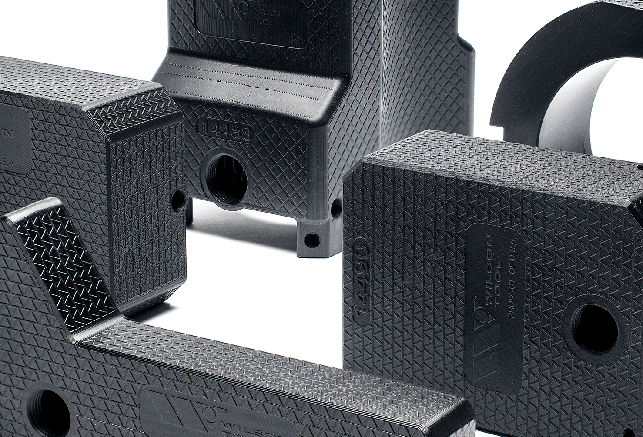
Company
Carbon
What’s the news?
Big discounts on select resins means real world additive manufacturing at scale is finally a financial possibility for customers
The reality?
Another company having a quiet event with regards to news, but an explosion of new applications from customers meant there was lots for them to show off. The materials news is a big deal with regards to scaling up production using the Carbon platform.
Grade:
C – Cost cutting on resins should drive wider adoption, although with rumours swirling of an IPO in 2019, Carbon didn’t announce any big news to rock the boat while closing out 2018

Company
Desktop Metal
What’s the news?
The new Studio+ system got a full European launch, with its new swappable 250μm printhead for extra detail, while it announced that the Production System now has a bigger build chamber in time for its shipping date in Q1 2019.
The reality?
Shipping of the Studio systems has been slow, and although production has ramped up, a lot of the non-US customers will be waiting into 2019 to get hold of theirs. In the meantime, Desktop Metals software arm is where you should be looking: Live Parts has had a whole host of updates to its generative design capabilities, and the new machine agnostic Fab Flow software will be a godsend to anyone running a 3D printing bureau.
Grade:
C – Little was entirely new, but the updates and software tweaks maintain what DM is aiming to achieve
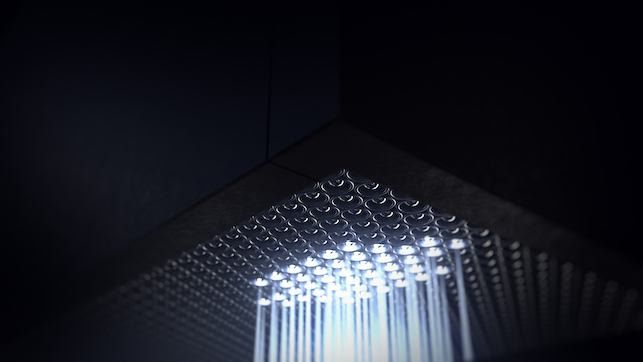
Company
EOS
What’s the news?
EOS LaserProFusion (LFP) technology revealed, offering a future where 10 times faster sintering is permissible using one million diode lasers
The reality?
Announced excitedly as the pinnacle of its 30 years of work, LPF aims to be as productive as injection moulding. In the meantime, the best news came for existing customers, including a new SmartCAL service solution (a combination of hardware and software for laser scanner calibration); as well as new faster build rates for certain metal materials.
Grade:
C – The future can’t come fast enough for some, but for now it’s more of the same: readying for mass manufacture and optimising tech for the present day

Company
Essentium
What’s the news?
Its new partnership with BASF and Materialise looks to accelerate the development of this Texas company’s High Speed Extrusion technology.
The reality?
The company is innovating in both its machines, materials and processes. The HSE technology is available to pre-order and with the backing of BASF and Materialise to figure out the software it’s promising stuff.
Grade:
C – One for the near future, but it’d be harsh to ignore the amount of interesting engineering-grade filaments that Essentium already has in its portfolio.

Company
HP
What’s the news?
New customers, applications and partners, including BMW and Volkswagen.
The reality?
It was the first chance to see some real use cases for HP’s Metal Jet technology, and although some of these were frivolous parts (your name on your car keys) it was the filler that’s needed until the tech really starts to take off – parts like the BMW i8 window guide rail hinted at things to come.
Grade:
C – Not much new to see here – a year of consolidating and pushing sales – although you know there’s a lot more coming just over the horizon

Company
Intamsys
What’s the news?
New dual nozzle FDM 3D printer, the Funmat Pro 410 enables users to print high performance functional materials like PEEK, PEEK-CF, PEKK, PEI and many others for a $20k price tag.
The reality?
The price is what grabs the attention, with some printers with similar abilities costing nearly ten times this. The quality of the parts coming off the build tray seem assured enough.
Grade:
C – The scope here is to go after the Stratasys Fortus market, and with such a low price it certainly gets its foot in the door. However, it remains to be seen how the company will grow out of its Shanghai base – the support network for the machines should anything go wrong is minimal at best
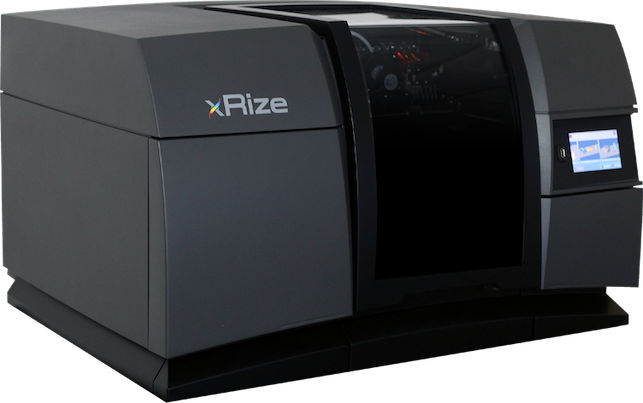
Company
Rize
What’s the news?
The new XRize model is capable of printing full colour, functional parts, as well as composite materials including chopped carbon fibre and Kevlar.
The reality?
We’re yet to see whether there’s an appetite for full colour 3D printing, but adding composite materials to its already tough FDM materials? With the added bonus of a release agent meaning minimal postprocessing? We could see Rize’s tech finding its true niche.
Grade:
C – Its shift from being an expensive prototyping desktop 3D Printer trying to please everyone, to something a little more engineering functionality-based and niche with the colour could see it find its place in the market

Company
Trumpf
What’s the news?
A new green laser with a pulse function is expanding the range of materials the TruPrint 1000 metals 3D printer can output – including pure copper and gold.
The reality?
Precious metals printing has proved tricky and although there’s a market for it, casting still reigns supreme. What was impressive was Trumpf’s other announcement of a new technology with a 500°C build chamber that allows for tool steel to be printed without the cracking that has previously plagued the process.
Grade:
C – If carbon tool steel 1.2343 can be 3D printed without fractures then there’s a whole host of manufacturers that will benefit

Company
Mimaki
What’s the news?
Despite being around for the best part of a year, the snappily named 3DUJ-553 3D printer, which boasts over 10 million colours, got a full European launch, and had attendees fawning over all shades of its output.
The reality?
Colour 3D printing really didn’t take off the first time around, but the arrival of this 2D printing company – along with further colour announcements from HP and Stratasys – seem to point to a revitalised sector.
Grade:
D+ – The machine offers some amazing colour output for its €200,000 price point, so if its lifelike colour you’re after then go take a look, otherwise there’s plenty elsewhere
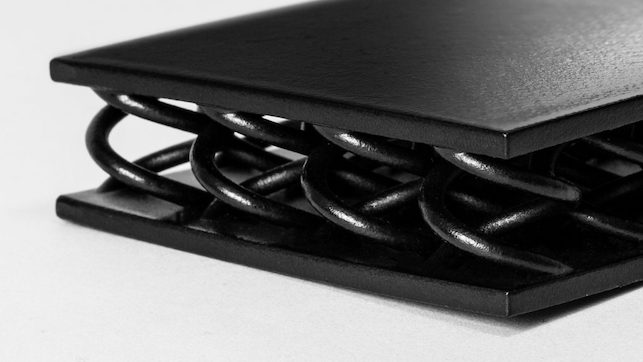
Company
DyeMansion
What’s the news?
Its new VaporFuse Surfacing (VFS) post processing process to give smooth parts akin to injection moulded plastics, and a widening spectrum of colours
The reality?
The chemical treatment used in VFS leaves SLS parts with a high-gloss, water-repellent surface, meanwhile the colour matching offered is capable of transforming 3D printed parts into something much more consumer friendly
Grade:
D – VFS is still in its infancy, while an expanding colour palette should see DyeMansion’s business continue to bloom into 2019
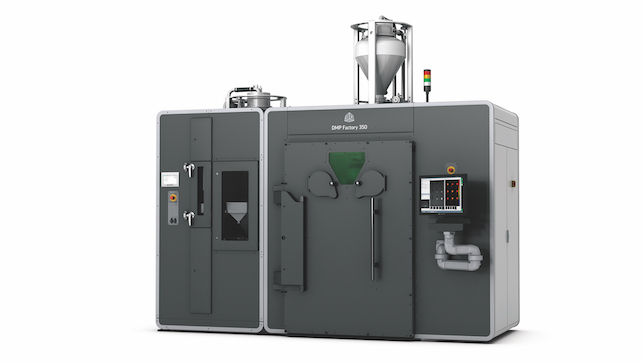
Company
3D Systems
What’s the news?
The launch of the DMP 350 Flex and DMP 350 Factory metals 3D printers
The reality?
3D Systems’ rebirth has slowed somewhat following two whirlwind years of refocussing on industrial applications. There was little new on show, although from what history has shown us that might be a good thing, with the company spending a little more time fine tuning its output first time around
Grade:
D – A quiet Formnext by its standards doesn’t impact the progress that has been made in recent years

Company
Xponential Works
What’s the news?
The ‘investment and mentoring’ company with former 3DSystems CEO Avi Reichental at the helm is looking to ‘Upgrade Additive Manufacturing’ with the technology produced by the companies residing in its Ventura California Labs.
The reality?
We left Xponential Works’ stand still slightly baffled by why its ‘ecosystem’ was front and centre over the actual technologies. All of what was on show was in various stages of development and we’ll be keeping tabs on several of them should their promise become reality, especially generative design tools from Paramatters; fast DLP-like 3D Printing from Nexa3D, and fast polymers sintering 3D printing from NXTFactory
Grade:
D – It felt like the potential of the technology – and there was a lot to take in – was greatly overshadowed by a parent company trying a bit too hard to make its mark on the industry
We grade all the news and product launches that closed out 3D Printing in 2018
Default






